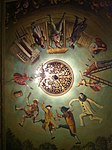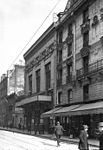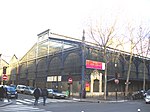Place de la République
Buildings and structures in the 10th arrondissement of ParisBuildings and structures in the 11th arrondissement of ParisBuildings and structures in the 3rd arrondissement of ParisLiberty symbolsSculptures of lions ... and 1 more
Squares in Paris

The Place de la République (known as the Place du Château d'Eau until 1879) is a square in Paris, located on the border between the 3rd, 10th and 11th arrondissements. The square has an area of 3.4 ha (8.4 acres). Named after the First, Second and Third Republic, it contains a monument which includes a statue of the personification of France, Marianne. The Métro station of République lies beneath the square, served by Line 3, Line 5, Line 8, Line 9 and Line 11. It is one of the network's main transfer points on the Rive Droite.
Excerpt from the Wikipedia article Place de la République (License: CC BY-SA 3.0, Authors, Images).Place de la République
Place de la République, Paris 10th Arrondissement (Paris)
Geographical coordinates (GPS) Address Website External links Nearby Places Show on map
Geographical coordinates (GPS)
| Latitude | Longitude |
|---|---|
| N 48.867277777778 ° | E 2.3640555555556 ° |
Address
Place de la République
Place de la République
75010 Paris, 10th Arrondissement (Paris)
Ile-de-France, France
Open on Google Maps










